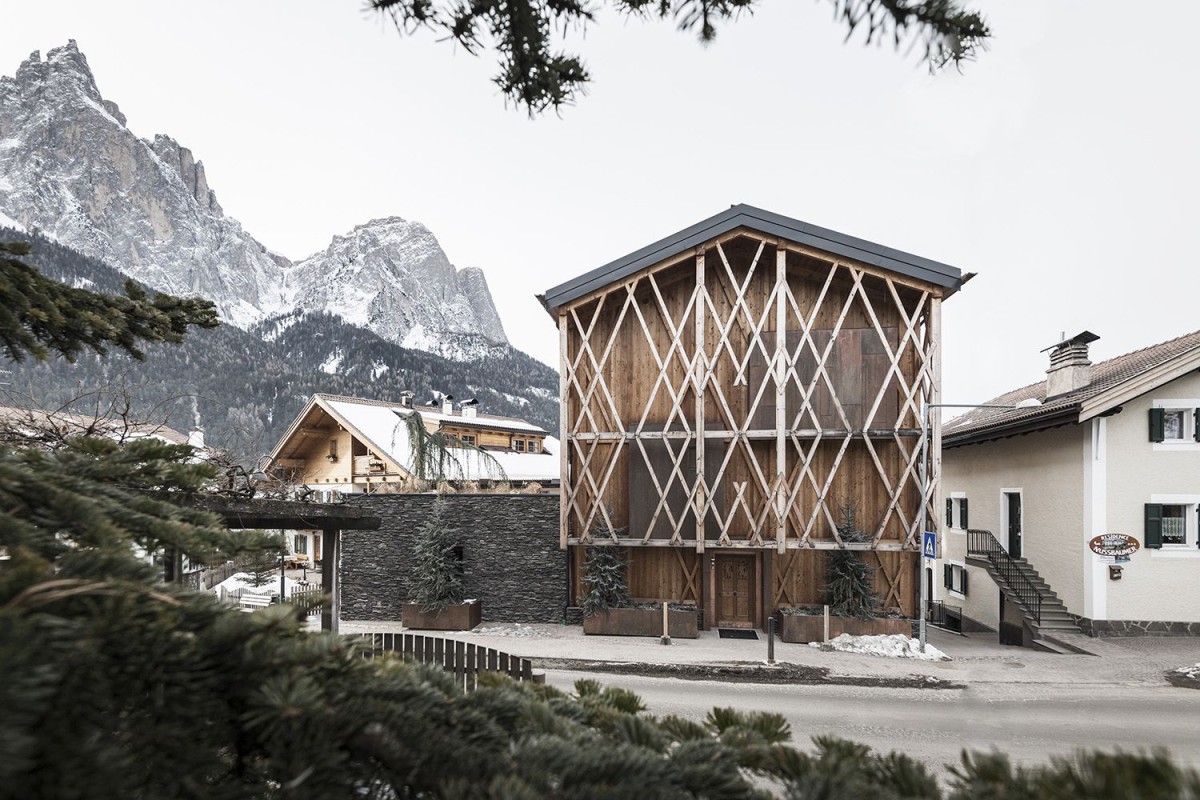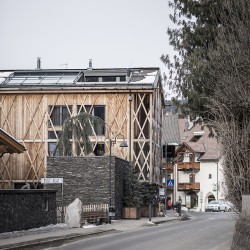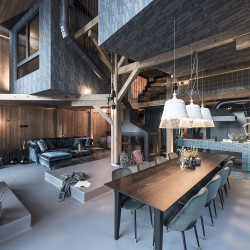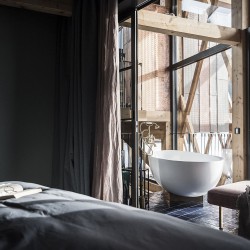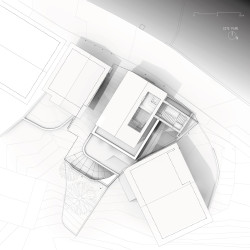NOA – Network of Architecture . photos: © Alex Filz
At the foot of the Sciliar, in the picturesque area of Alpe di Siusi, the spirit of a barn is reborn as a home. The project, realised by noa*, has at its core the South Tyrolean tradition, which surprises one with its visionary and unexpected interior design: an almost magical ambience is created, inspired by childhood memories. By holding onto tradition, yet at the same time letting go, so as to create an original identity, a new way of living, a different structuring of the domestic space, and to search inspiration from a childhood passed in the mountains. This, in summary, was the challenge that noa* faced in the project to build a new home at Siusi allo Sciliar, where the original structure dates back to 1850. The job, completed in 2017, should be understood in its complex and delicate context.
We are talking about South Tyrol,and a project executed at a height of 1100 meters a.s.l. at the foot of Alpe di Siusi, a part of the Dolomites recognized as a Unesco World Heritage due to its outstanding natural beauty. It was therefore extremely important to respect the parameters of the original structure and the urban planning requirements and regulations of the village. For Stefan Rier, co-founder of noa* and in this instance ‘his own client’, the project was an opportunity to give a personal footprint to his own property. In this sense there was a move away from the traditional principles of space distribution, this being achieved in part by recalling memories of a childhood spent in the mountains.
The outcome of the project is a dwelling, having two aspects which confront each other in their style. The exterior represents the traditional alpine location, splendidly immersed in the local topography, whilst the interior boasts the visionary impulse, the surprise of a space freed from the general scheme of things, almost permeable, osmotic, and certainly innovative. On the ground floor there is a common area which spreads out almost in a ‘piazza’ fashion for general habitational and interactional use: there is a dining table to enjoy with friends, an ample sized kitchen to accommodate more than one cook! The rest of the house develops in a vertical way and instead of the classical room division there are what can be described as ‘hanging boxes’, which are positioned at different heights, interconnected by stairs and walkways – they give the sensation of walking up a mountain path towards the peak.
The hallways are carefully designed so that, apart from their connecting function, they accommodate other essential areas such as the library and open ‘bathroom’ areas with tubs and showers (only the WC are closed in). The entire structure is conceived in a way that the further one goes up the level of privacy and intimacy is heightened. The highest ‘box’ which features a sauna opens out to the splendid view of the Santner mountain. The revolutionary distribution of the interior spaces can be noted also from the exterior, and a sort of counterpoint is created with the traditional presentation of the exterior itself. To the north the two boxes of the bedrooms, finished in bronze, can be seen behind the wooden trellis shell, and as a result the material contrast is evident, while to the south it is the glass box of the sauna which protrudes. It is an architectural concept, both extremely innovative and courageous in nature, but which also has the value of being able to evoke an atmosphere of time passed. Viewing the structure from a distance, the larch framework, which supports the hanging boxes with its roof supported by 12 meter high wooden columns, seems to be the outline of an old barn.
The house mirrors the construction type of the location’s rural buildings. On the stone foundation, is a wooden structure in larch on three levels, and which supports the gable roof, typical of the village’s dwellings. A wooden trellis covers the whole house in a shell-like manner, screening the light and heat of the sun in the hotter periods, and as a whole it is suggestive of the typical structures of alpine barns. Two boxes, one in bronze and one a glass structure ‘peak out’ from the trellis, to the north and south respectively, and so revealing to the exterior that there is something complex to the interior layout. To the south there is a glass facade and a terrace which opens out to the magnificent view over the landscape of the Dolomites, which is dominated by the Sciliar massif. Inside the house, the distribution of spaces and functions is really unusual. The ‘boxes’ which house the three bedrooms are supported by the wooden beam structure, visible in its totality (12 metres high). The bedrooms are designed as micro-homes, each one having its own particular design, these boxes seem to almost ‘hang’ in the ample volume of the interior (1100 cubic metres). One gains access via a staircase and a walkway system, which as well as having a connecting function, accommodate the ‘bathroom’ areas with tubs and showers (only the WC are closed in).
_

